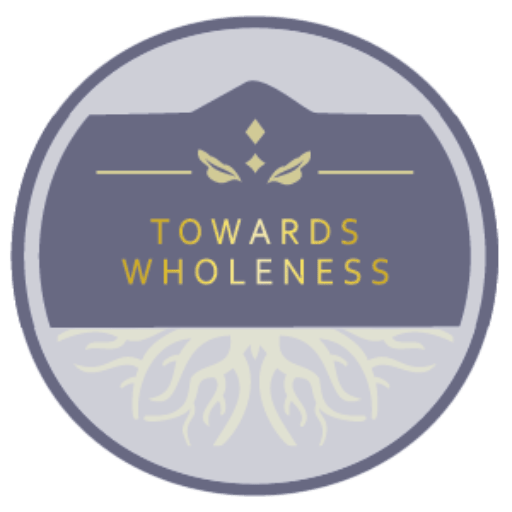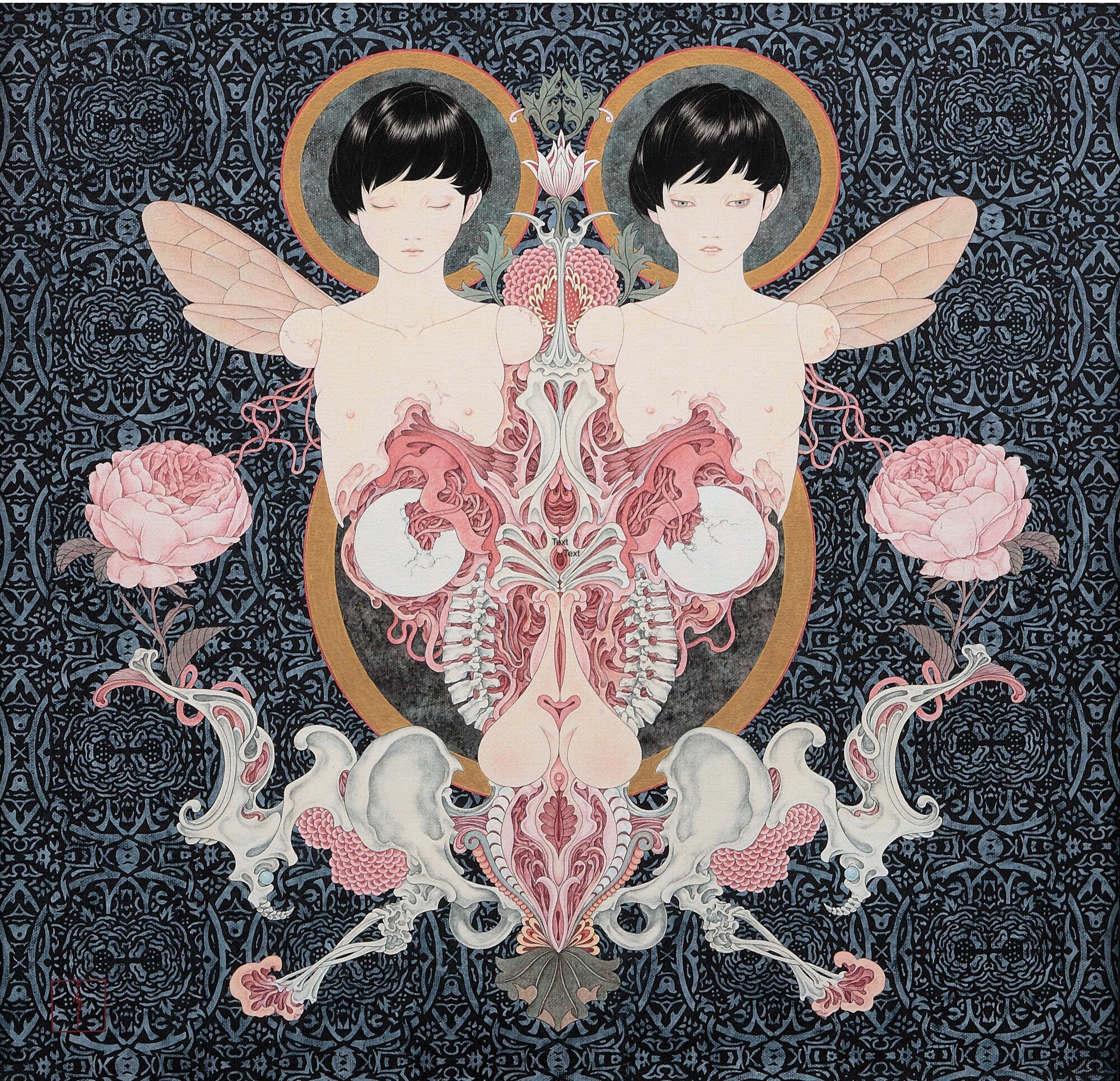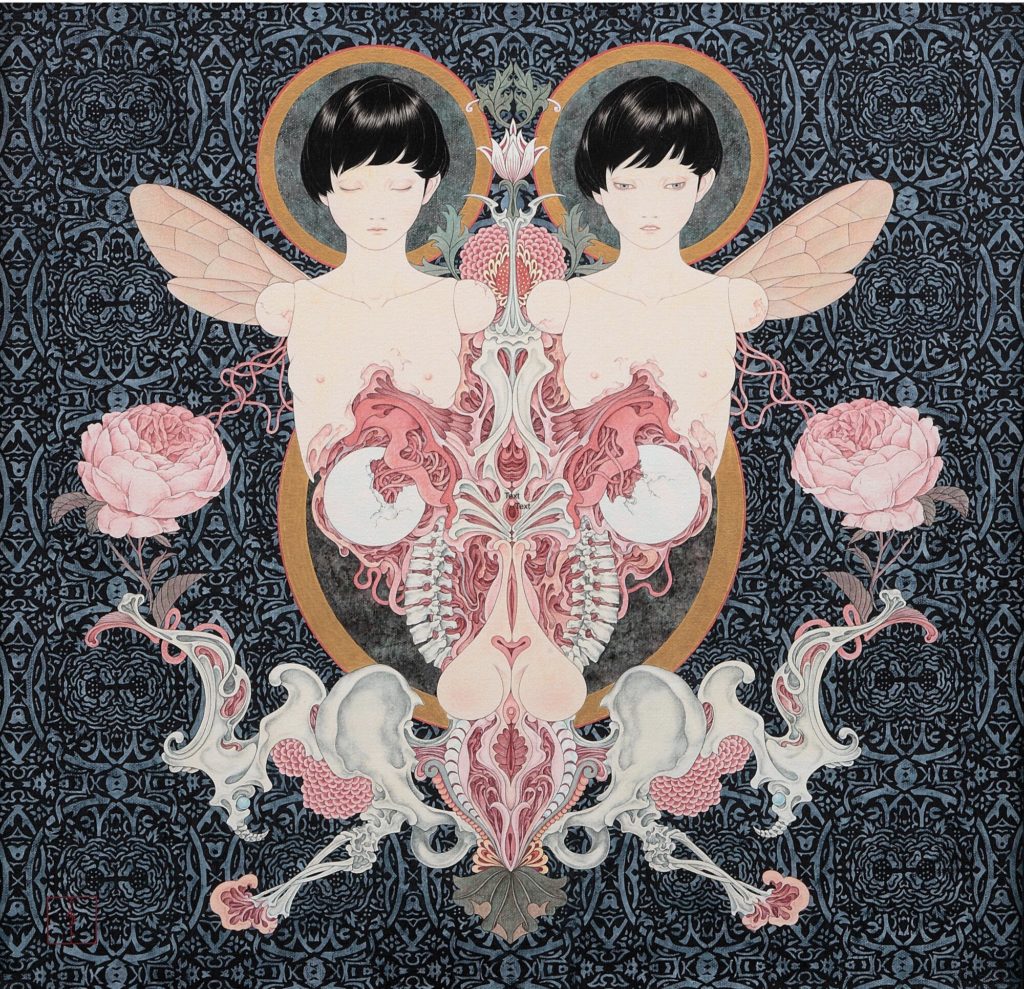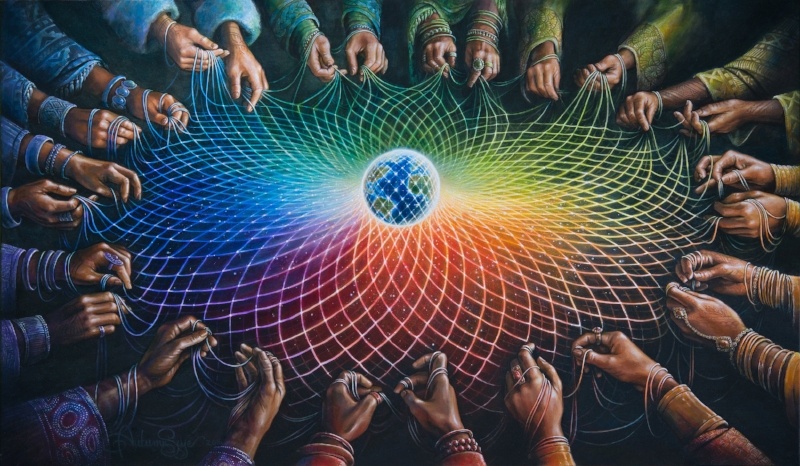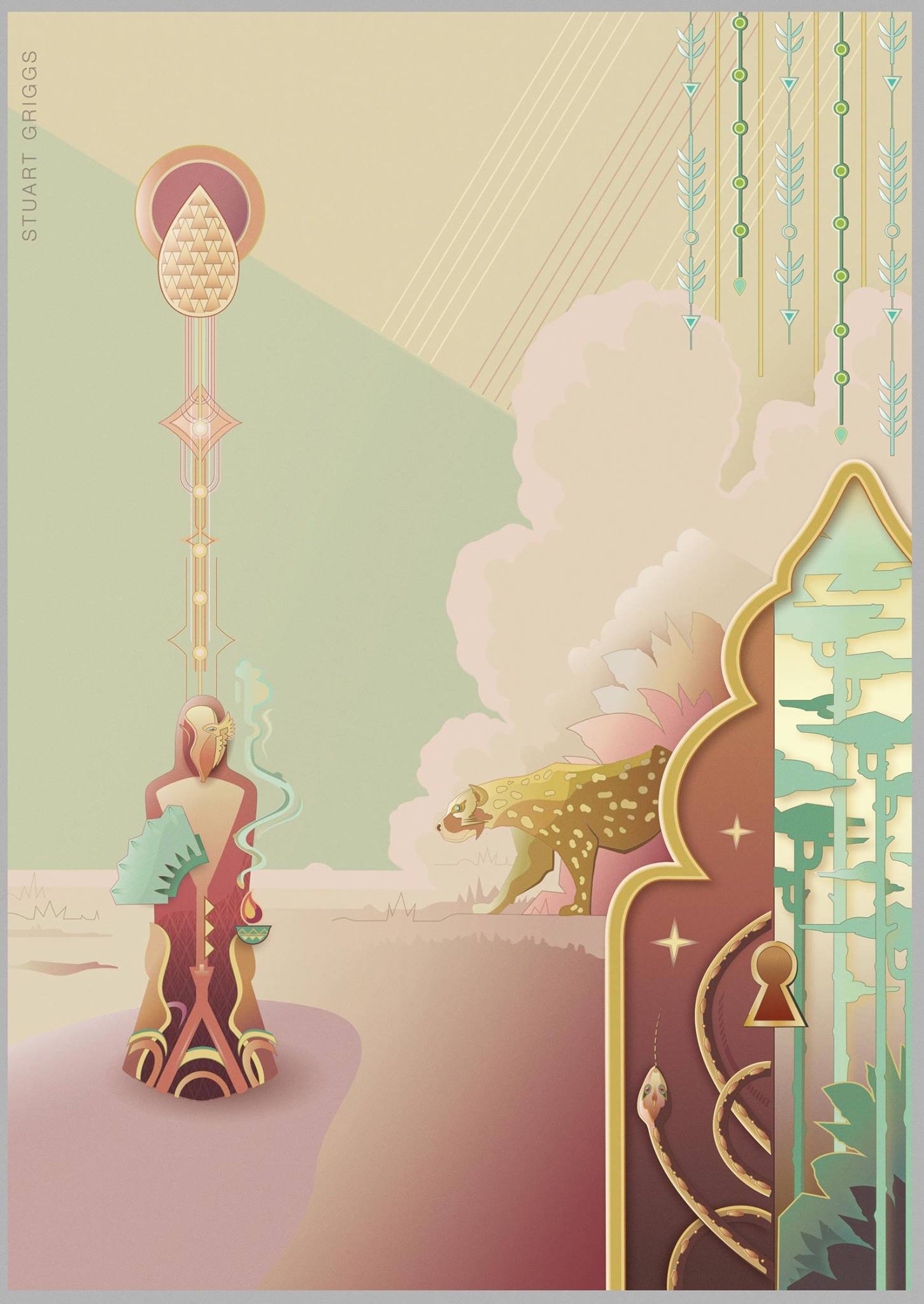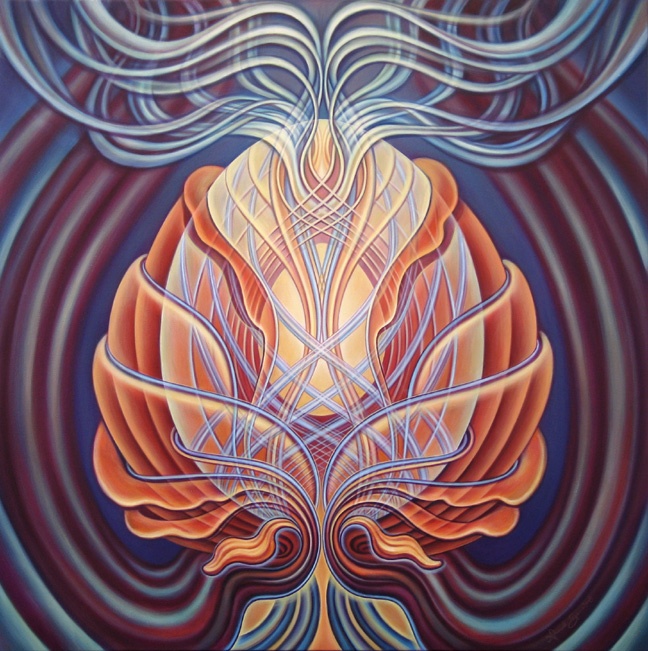
The Essential Self
The exploration and mapping of the ‘self’ have been at the heart of psychological and spiritual inquiry. There is the self we have access to in our day to day lives and a Self that is obscure and reveals itself primarily through peak experiences, as a much broader place of knowing and potential. The various manifest and unmanifest aspects of self, exist in dialogue and tension at the very edges of our growing.
THE EGOIC SELF
The part that is most accessible to us through everyday life is the egoic self. Here lies our centre of consciousness, holding the thread of continuity between past and present, through which we weave our sense of identity and belonging. The egoic self holds our life stories and becomes shaped through the ripples of cause and effect that these create. If we grew up with intrusive or aggressive parents, then our egoic self may become impermeable as a result of finding intimate relationships unpredictable, threatening or overwhelming. If we grew up in a family that consistently neglected our basic needs, then our egoic self may grow around a deep sense of worthlessness. If we have come from a family of ancestral riches and success, then our egoic self may constantly strive to maintain our belonging through following on our ancestors’ footsteps. What this means, is that while we tend to think of the egoic self as distinct and separate from others, it actually comes to exist through a web of fairly proximate relationships that come to shape its curves and edges. Everything we know so well about the impact of ancestral and early environments on later personality supports this. I like to think of the egoic self as a tree that is part of a much bigger forest, intimately bound and dependent on the overall health of the wider ecosystem its roots belong to.
The egoic self that exists within the realm of everyday consciousness is destined to hold a narrower view into the deep complexities of life. Tightly bound with our early developmental needs and wounds, it can inflate everyday encounters to shapes of utmost and ultimate importance. At times it lands us in our well-developed abilities and resources and at times it pulls us through our early narcissistic wounds and primitive defences. And so, the egoic self can at times render us deeply vulnerable and tied to the mortal games of life, the frightful struggles for control and ultimately survival.
THE ESSENTIAL SELF
Behind the contours of the egoic self, hidden from view in our encounters with everyday life, lies the essential Self; eternal and expansive. This deep space of knowing exists through many names; some call it true nature, consciousness, spirit, soul, deep psyche, or wisdom. Firmly rooted within the greater picture of all things, it lends us a perspective that joins the dots between the minutia of life. The essential self operates from a deeper, wider and broader source of reality. Its knowing penetrates into the very heart of any matter, allowing us to stand in soulful truth. From here we become resourced to face the greater existential matters and explore the bigger answers life calls on us to draw from. The essential self can ease the tyrannical fears of the egoic self, giving us space to contemplate life’s challenges and resources from a place of deeper presence, authenticity, connection and compassion. It can help us reshape the stories of our egoic self and reframe how we relate to our lives.
The essential self is the bedrock of our highest values, integrity and truth. It discerns everything that ever happens as a micromovement, its outcomes vastly uncharted and unknown. How many times have we deeply grieved only to find new life emerging through the undergrowth of our pain and sorrow? How many times have we deeply craved for something only to find it unfolding into a different reality to what we dreamed of? Such movements through life’s twists and turns are supported by the essential self which is tightly bound to the ebb and flow of life, the deeper currents of death and rebirth, chaos and order, the coming apart in service of a renewed coming together, the interdependence of it all. From these deep roots all is ever growing, ever emerging, ever becoming. We can think of the essential self as the forest that surrounds and sustains the tree of the egoic self. The great mother that can nourish its frail vulnerabilities and temper its infantile struggles. While the egoic self is bound by the wounds of the past, the essential Self radiates the potential healing of the future. While ego struggles to be right, the essential self strives to be whole.
NAVIGATING BETWEEN THE TWO
But how does one move from ego-consciousness to the essential eco-consciousness? From the part to the whole? From what matters to us at any given moment in time to what matters in the greatest spread of things? How do we gestate something greater to emerge and become a reality through us? Such midwifing requires some kind of inner communion and connection. It doesn’t tend to happen while we are on autopilot, moving ahead from task to task, from day to day, deeply ingrained into the rustling humdrum of everyday life. Sometimes a wounding, a slippery time, open this entrance. Sometimes when the ego is overwhelmed and at a loss for answers, the essential self finds an opening to reach us. Rites of passage and initiations like the one we have collectively and unwittingly stepped into through Covid, myths, rituals and ceremonies, expanded states of consciousness, embodied practices, deeply reflective and contemplative practices can open the door to our path, our healing, our sense of purpose, our greater truth, our true belonging. They can bring the essential self in support and service to the egoic self.
There are times where moving from one to the other is immediate and seamless and other times where the egoic self can become overwhelmed by the realities and input of the essential self, requiring a long journey to support this integration. Such openings to something greater require a resilient enough ego-center that can withstand and sustain the contact between the egoic and the essential self. There is also a wider need for the containing power of community that can acknowledge the value and develop the trust required by such a process.
In the hands of some new age belief systems the essential self has been turned into an inner knowing God to whom we only need to surrender all of our life’s struggles and responsibilities. But in depth-psychology, these deeper archaic forces require our utmost presence and participation. We have to step into the hidden layers of our pain that this place opens us up to and the responsibility that comes with deeper knowing, if we are to receive the inner resourcing it can offer. The essential self is a place we must always come to and then return from. The dangers of residing here are too grave. While we might wish to stay here to inflate or numb ourselves from life’s painful encounters, we risk bypassing reality and our human capacity for tension, pain and therefore growth. The dangers of residing only in the egoic self is to be continually re-wounded by our blind spots, risking burnout and depression. The egoic and the essential self are neither to be kept apart as separate nor may not choose one over the other. They are meant to be kept in constant connection, nourishing one another with their alternate and diverse realities. While we must never abandon the egoic self, we turn to the essential self for a deeper nourishing of our resources, preparing for our next steps, onto the ground of reality. Indeed, our spiritual, psychic and emotional health depend on periodically coming to step into this greater re-source of things, this space of greater wholeness.
OUR CURRENT TIMES
In our current collective times, on an egoic level, we are in crisis. On an essential level, the world is trying to speak to us and reach us. These are times that require our utmost inner and outer participation. Away from the polarities of catastrophe and divine intervention, in the midst of the greatest collective event we have encountered as a generation, lies a powerful archetypal territory taking us through the pivotal process of death and rebirth. Such challenges call on us to reach further within ourselves so we can grow to our collective and archetypal greatness and vastness, to our true essential nature, to nature herself.
In this great initiation we are being called to our values and our integrity. To navigating our path with intention and purposefulness. To accessing the deepest strands of our humanity. There is a lot for all of us to grapple with; questions with answers, questions without answers, answers still waiting for the right questions. Our deeply ingrained collective ego structures are being challenged. If we can sit through this painful shedding process, we can access our deepest hidden wounds as they become available for healing. In the words of Lynne Twist:
The primary battlefield of this century is with ourselves. It is the battle between the self and the Self: between our existing habituated self and our emerging future Self, both individually and collectively.
As we navigate through these times, the essential self is being called to bring its deep roots, its deep belonging to all things, in greater view. When we ground in this connection to the source of all things, we can return, re-sourced and connected, to the resilient centre of our egoic self, to meet the tasks we are faced with. Once we connect to the brightest possible light of knowing within ourselves, the animating force of the world, we can begin to recover a deep love and respect for all our mortal brokenness. With humility and courage we embark on the healing journey of slowly transforming our wounds into growthful potential.
